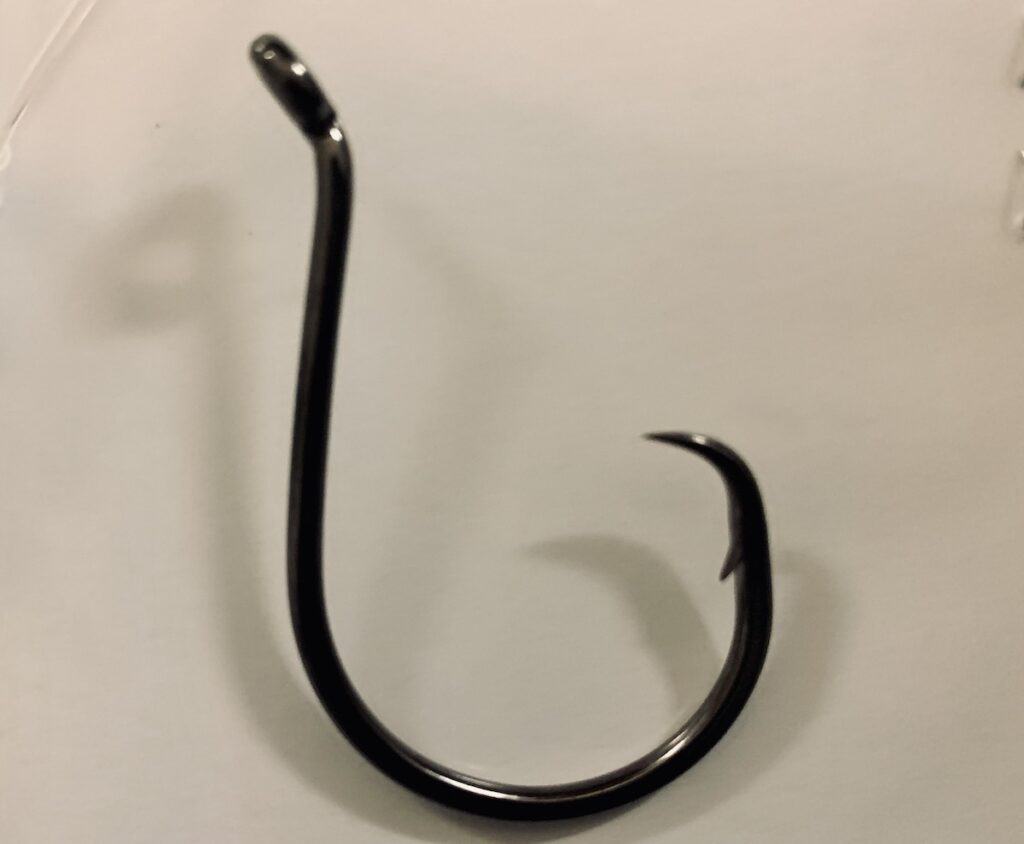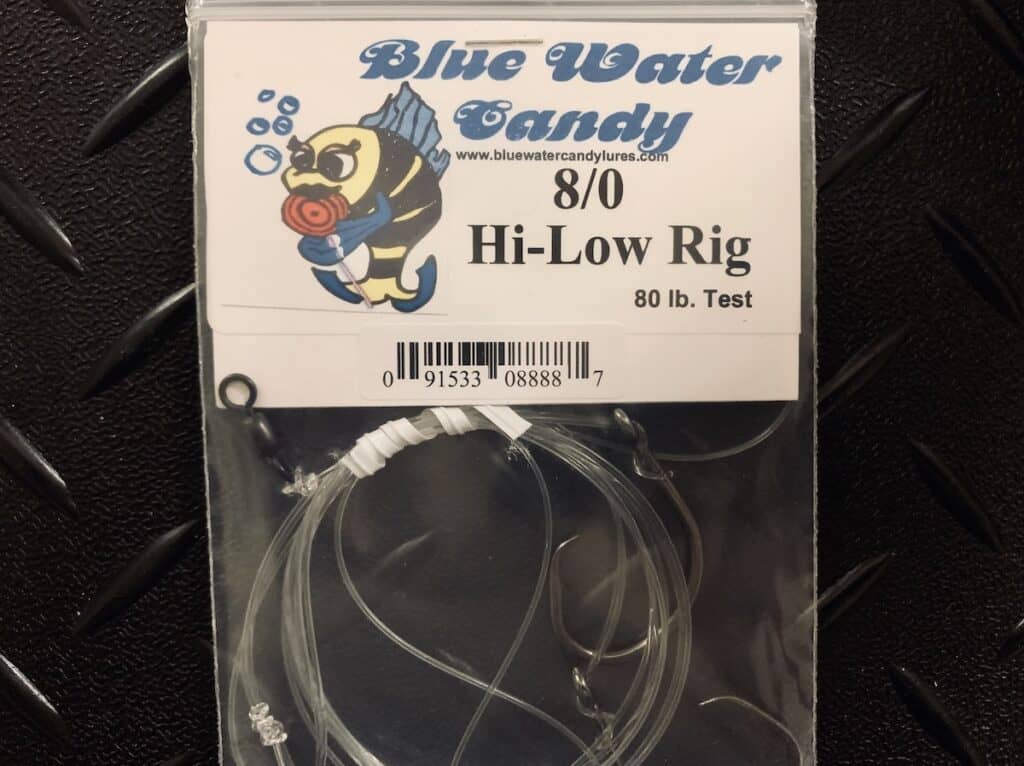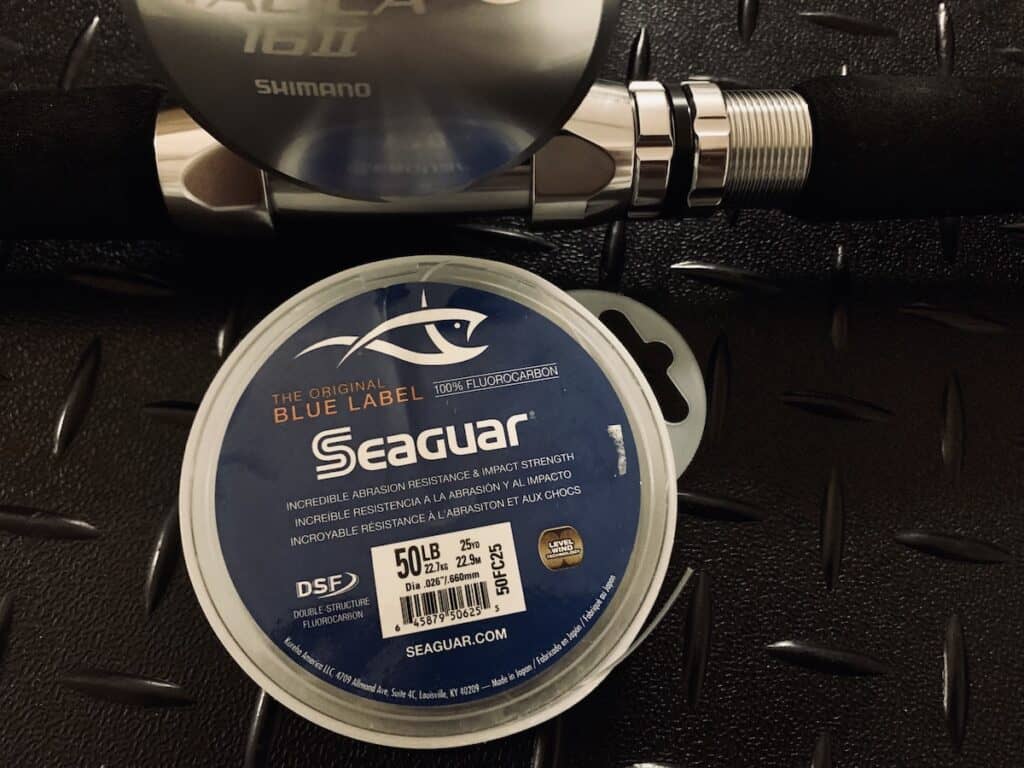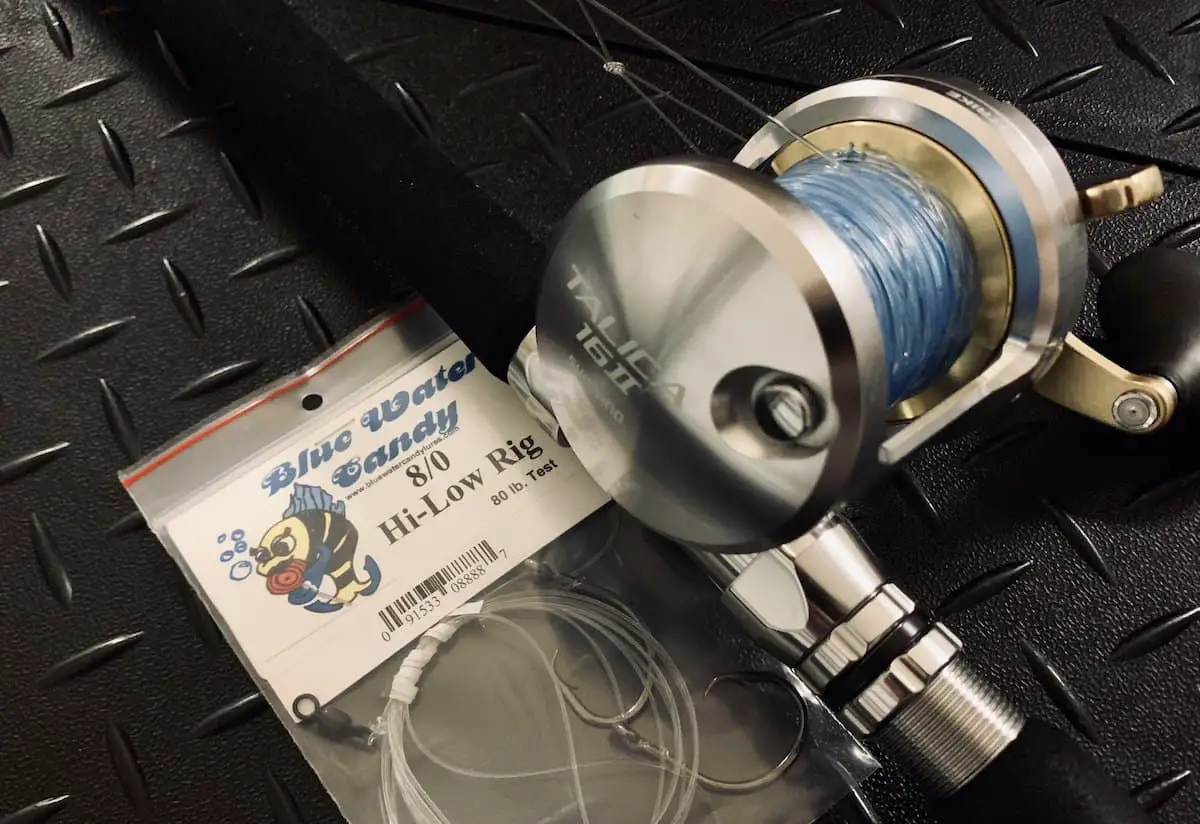When you’re taking the first steps to learning how to bottom fish offshore, nearshore, or from a pier, chances are you’ve got a fish in mind you’d like to target. Whether its red snapper season on Florida’s Atlantic coast, or you’re looking to catch grouper in the Gulf, this article will provide all the information you need to know.
The article will cover everything from the behavior and common locations of bottom fish, to the best baits, rigs, hooks, and line. I’ll also offer guidance on choosing a rod and reel setup optimum for bottom fishing.
Bottom Dwelling Fish
The fish you’ll usually target with bottom fishing in the ocean include grouper, snapper, flounder, amberjack, tilefish and hogfish. These fish hang around structure such as ledges, reefs, and wrecks to give them shelter from predators.
These locations are also ripe for high baitfish and crustaceans populations, which these bottom dwellers feed on. Grouper and snapper have a tendency to strike bait, realize they’re hooked and dart back into structure. Once they’re back in structure, they’ll inflate their swim bladder to stay locked in a spot and thrash wildly trying to cut off your line.
This behavior is part of what makes bottom fishing enjoyable. Anglers have to sense the bite and start retrieving with a lot of power to pull them away from structure immediately.
Tilefish are one of the exceptions and they are normally found hiding in soft mud. To target tilefish, you would drag a bait across the bottom, stirring up the mud and attracting the bite. They’re tough to locate because they’re hidden, but you can bet you’ll find them when you’re in a location with a large stretch of smooth mud.
Some tilefish are found in very deep waters and may require the use of heavy deep drop tackle.
Grouper, snapper, flounder, tilefish and hogfish are all great tasting fish to eat. Bottom fishing can be one of the best ways to fill your cooler up with fish to feed family and friends. To learn more about bottom dwellers, read my article Bottom Fishing Fish.
Where to Find Bottom Fish
When looking for a place to bottom fish offshore, nearshore, or from a pier, I recommend looking at a map such as the TopSpot maps for your area. Although the fishing spots listed on the map generally draw a crowd, it’ll give you a starting point from which you can deviate and start to find your own fishing spots.
The important things to look for on a map are locations where there is a dramatic depth change, such as a drop off or a hump, wrecks, reefs, and rocky ledges. Bottom fish are most likely to be found at wrecks, reefs, rocky ledges, and other drop-offs. Once you get to one of those locations, look around for baitfish. If you see schooling grunts, you’re very likely to find grouper nearby.
How to Bottom Fish
If you’re new to bottom fishing and wondering how the technique works, its usually simple. The boat captain will position the boat at one end of the structure, and the wind and/or current will drift the boat over the structure while anglers on the boat drop and drag baits along the bottom. Baits are usually bit quickly after dropping.
Bottom fishing can also be done with a trolling motor with a position lock feature, or an anchor to keep the boat in one position. When this is done, the anglers will drop baited lines off one side of the boat and will most likely get strikes quickly.
When the anglers drop lines off one side of the boat, its important that they choose the correct side of the boat. You’ll want your lines to fall down and slightly out and away from the boat. This likely means you’ll be dropping bait with the current.
As you might imagine, if you dropped your bait against the current, the current would push your bait under the boat, making it difficult for an angler to get good leverage against the fish right after strike.
Along with dropping the lines in a favorable position with the current, the lines should also drop in such a way that they fall down the structure and the retrieve pulls the fish away from the structure. It will be extremely difficult to reel in a big grouper if you have to reel up and over the reef you’re trying to keep it away from.
Best Bottom Fishing Baits
Now that you know bottom fishing is typically done with bait, you’re probably wondering what kind of bait is best. Groupers, snappers, and hogfish can all be targeted with live bait such as grunts or live shrimp, or whole dead bait, or cut bait.
Live bait works well because of the minimal boat movement in bottom fishing. Unlike trolling, which can destroy a live bait simply because of the water pressure, live baits can stay alive for a while. The hook can also be positioned so it encourages erratic behavior, such as up through the mouth or hooked through the back near the tail fins.
Bottom dwelling fish feed on crustaceans such as shrimp, sand fleas, or any other crustacean. Cut bait also works very well. Fish such as bonito or pilchards can be cut and used for bait. Dead bait is much easier to deal with, especially if your boat lacks a livewell. Trying to keep live bait alive for a day of bottom fishing can be a challenge since you have to be careful not to overcrown the tank and the oxygen content needs to be right. .
For more information about where to find bait, how to catch baits, and how to rig them, read my article Bottom Fishing Baits.
Bottom Fishing Hooks
Most bottom fish require protection to maintain or grown the fishery population. Most have slot size limits to make sure the youth has a chance to grow and add to the population. There are Federal, and often state, laws that require the use of non-stainless steel circle hooks when targeting reef fish.
Non-stainless steel hooks will corrode faster, which seems counterintuitive in saltwater. The law states non-stainless steel hooks because the fish will actually shed these hooks easier if by chance the fish is gut hooked or the line is snapped off. Shedding the hook improves the likelihood that they’ll survive.
Some areas also require non-offset circle hooks. These are hooks where the point is perfectly in line with the shaft. This gives the fish the highest likelihood of being hooked in the mouth where the hook can quickly be removed and the fish returned if it doesn’t meet slot size requirements.

There is also a Federal law that states a venting tool or descending device must be rigged and ready to use when targeting reef fish.
A venting tool is a tool used to puncture the swim bladder of a fish to release the gas before releasing a fish. When the fish is released after a venting tool is used, the fish can re-inflate it’s swim bladder and return to depth over the course of a couple days. A disadvantage of using a venting tool is that it’s difficult to properly place the needle and you could risk damaging the fish.
A descending device is much gentler. The fish is clipped on the lip and connected to a line with a weight or a pressure gauge. Once the fish reaches half the depth, it is gently released and can return to depth. These methods of release are done to help give released fish the best chance of living.
To learn more about where these laws apply, read my article Bottom Fishing Hooks.
Bottom Fishing Rigs
Many different rigs are used for bottom fishing. Among the most popular are knocker rigs, 3 way drop rig, and a high/low rig.
A knocker rig is about as simple as it gets. This is one of the great things about bottom fishing. Simply tie a leader to a swivel attached to your main line, then put an egg sinker on the leader and tie a hook on the tag end. Cut bait is usually attached to the hook. The cut bait moves freely yet maintains depth with the sliding egg sinker.

A 3 way drop rig is just like it sounds. It's the main line tied to a 3 way swivel. The other two sides of the swivel are tied to leader lines, one to a hook with live bait, and one to a bank sinker to keep depth. The bank sinker must be heavy enough for the rig to reach bottom. A 3 way drop rig encourages a natural presentation by the live bait since its not directly tied down to a heavy sinker.
My article Bottom Fishing Rigs discusses the advantages, disadvantages to each of these rigs, and also identifies the hardware you need to build the rigs yourself.
Leader Line for Bottom Fishing
When bottom fishing, you must keep in mind that your leader line will very likely make contact with structure. It needs to be monofilament or fluorocarbon to maximize the abrasion resistant qualities. At times, the leader line can be higher in strength than the main line, especially if the structure is considerably rough.
When using a rig such as the 3 way drop rig where there is one leader that leads to a hook and bait, and another leader that leads to a sinker, you can use two different types and strengths of leader line. On this rig, the bank sinker will interact with bottom and likely structure and high strength monofilament works great. The leader line that attaches to the hook and bait could benefit from being invisible, so fluorocarbon works great.

On a knocker rig, a monofilament leader works well and the leader length should be conservative for the size reef or wreck you’re fishing. It should be long enough that your main line does not make contact with the structure. A good starting point for leader length is about 15 ft.
Main Line for Bottom Fishing
Grouper and snapper will bite somewhat softly and then swiftly take cover in structure. The strike itself will be subtle but needs to be felt by the angler to signal the need to retrieve. You’ll need a sensitive main line to transmit this feeling back to the rod and reel.
Braid is a very sensitive line and has the added bonus of being very small in diameter. You can pack on much more braided line onto a reel than you can monofilament of the same pound test because of the line diameter. Bottom fishing is a technique that requires a lot of line capacity because your rig will be reaching all the way to bottom.
When offshore or nearshore bottom fishing for species like grouper, snapper, and amberjack, you’ll need to use between 65 and 80 lb test line. The deeper you go, the more likely it is that you find stronger and bigger fish and the more likely it is that you’ll want to lean more towards 80 lb test line. In waters under 200 feet deep, 65 lb test line is usually enough.
For a more detailed discussion on the best main line and leader lines for bottom fishing, read my article Bottom Fishing Line.
Bottom Fishing Rod & Reel Combos
The ideal rods and reels for bottom fishing can be very versatile. Newer anglers can use large spinning setups as long as they have adequate line capacity. Using spinning tackle for bottom fishing can prevent a junior angler from getting a nasty birds nest on a conventional reel. It can also make for a more enjoyable experience since they wouldn’t need to also learn to manually levelwind a conventional rod.
Although spinning tackle will work, a conventional reel more easily has the line capacity in a compact package. There are several important features to look at when choosing a bottom fishing reel, and if you’re in the market for one, I highly recommend you read my article Bottom Fishing Reels: Read Before You Buy.
Without going into too much detail here, the ideal reel for bottom fishing has adequate line capacity for 65 lb test braid, a low gear ratio for the power to fight big bottom dwellers, and at least about 20 lb max drag.
The bottom rod is usually between 6 and 7 feet long, which is just enough length to stay away from the edge of the boat without being an issue to store it. The power is dependent on the line strength, but is most often heavy power. The tip needs to be flexible, so look for a moderate-fast to fast action. Click here to read more about the ideal Bottom Fishing Rod Features.
When it comes to pairing your reel with a rod, the sizing is important to understand. My article Bottom Fishing Rod Reel Combos talks in detail about how to pair a bottom reel with a properly sized rod.
What About Lures?
The most common setup for bottom fishing includes using a rig with cut bait or live bait. A newer approach, called slow pitch jigging, targets bottom fish with wide, flat, leaf-shaped jigs. This technique is far different from traditional bottom fishing, although it’s still considered bottom fishing. If you’d like to learn more about it, read my article Bottom Fishing Lures.
After reading this article, I hope you have the information you need to get started with bottom fishing. If you need any additional information, don’t hesitate to read through any of the more detailed articles linked throughout. Tight lines, y’all!
Recent Posts
Fat Cow Jig Strips: The Ultimate Bucktail Jig Upgrade for Surf Fishing
As discussed in my previous article, "Surf Fishing with Bucktail Jigs: Ultimate Guide for Beach Anglers," bucktail jigs are a staple in any surf angler's tackle box, offering a versatile way to catch...
In my previous article, "Surf Fishing with Bucktail Jigs: Ultimate Guide for Beach Anglers," I introduced you to the bucktail jig and discussed how versatile of a lure it is for catching a wide range...

